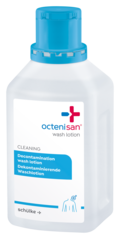
April is C-section Awareness Month
For most women, the birth of their child is closely linked to joyful expectations. Unfortunately, the process also involves certain risks, especially if the doctors have to perform a caesarean section.
The number of caesarean births is steadily increasing worldwide. Although doctors can often save the lives of mother and child in this way, certain risks, such as infection of the incision wound, cannot be ruled out. Wound infections are among the most common hospital-acquired infections worldwide [1]. As part of this year's C-section Awareness Month, schülke is sharing some information on C-section births and how expectant mothers can avoid wound infection.
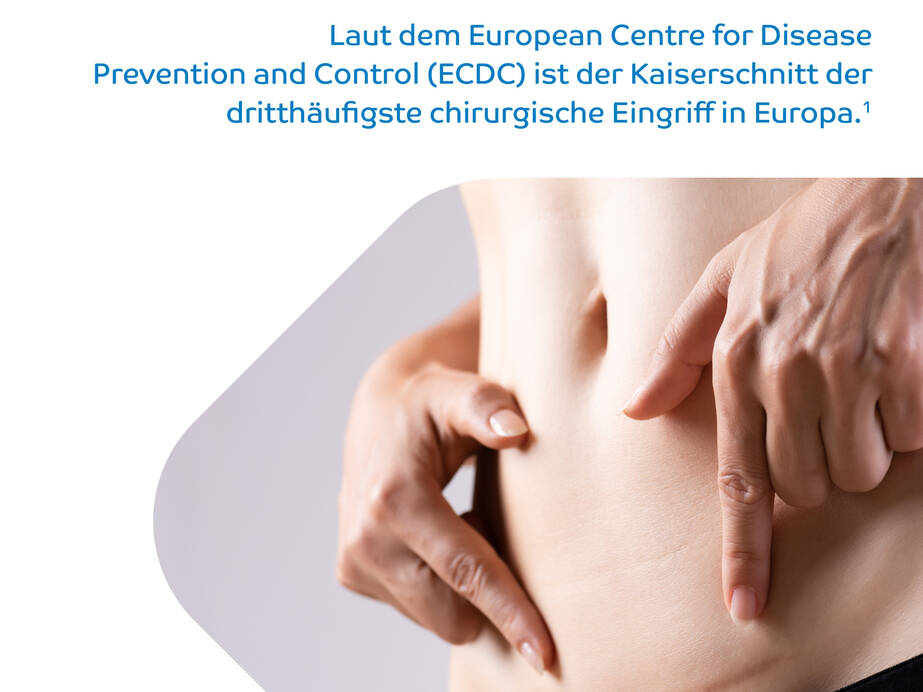

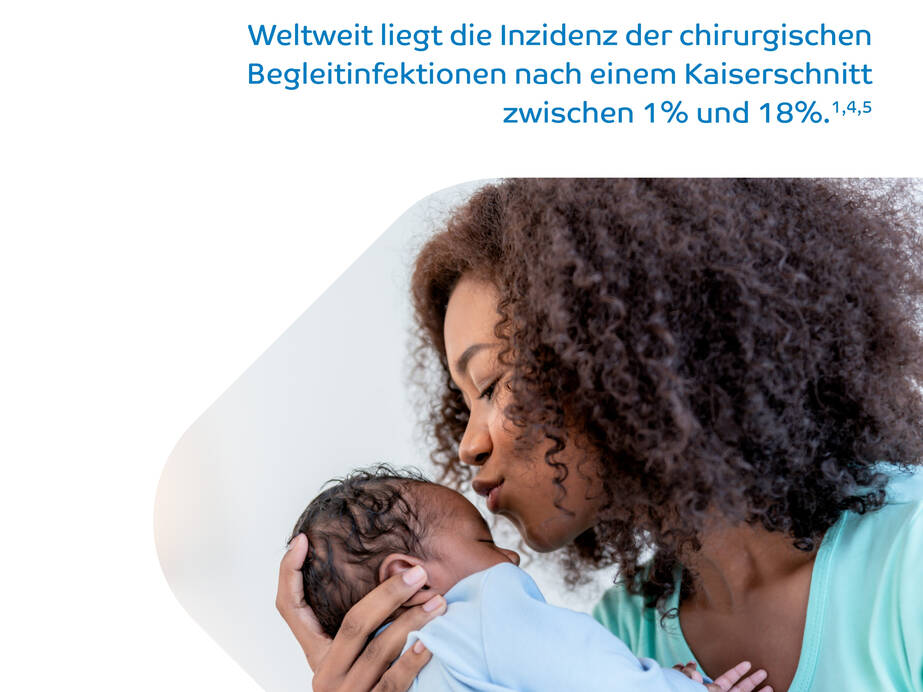
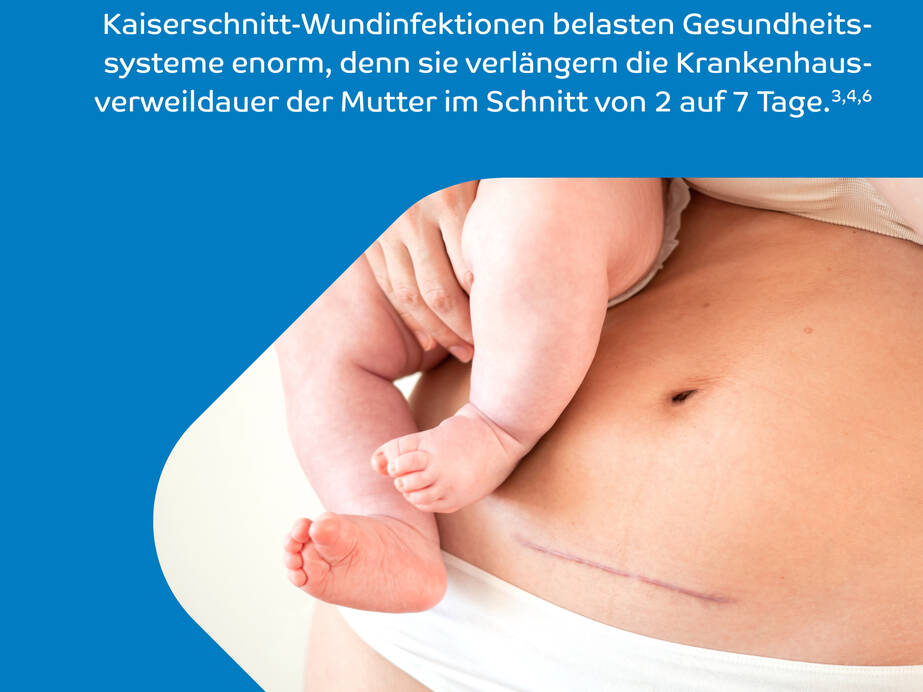

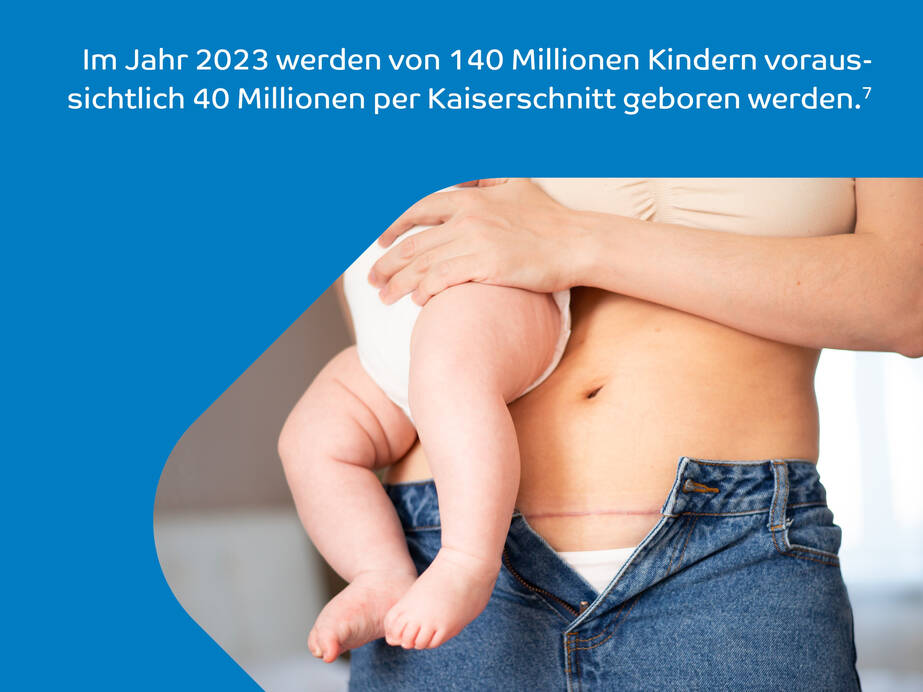
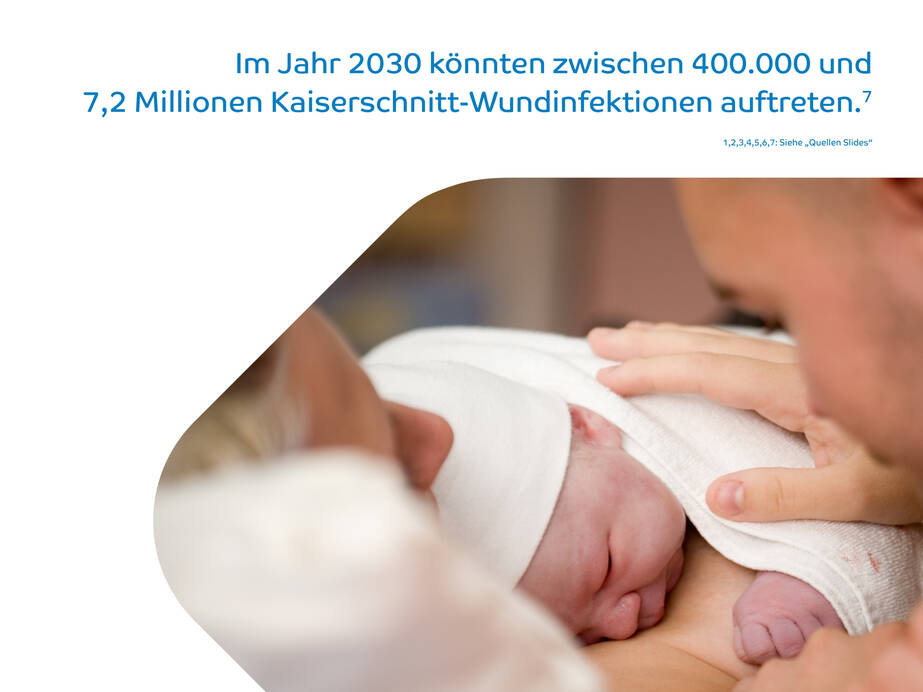







What are the possible reasons for a caesarean section wound becoming infected?
- Certain factors increase the risk of infection, for example
- Overweight of the mother
- High blood pressure
- smoking
- Multiple vaginal examinations before the birth
- An emergency caesarean section
- One of the biggest risk factors: giving birth in a low-income country [2,3,4].
The number of women who contract an infection from their caesarean section is expected to continue to rise worldwide. This is due to the increasing number of caesarean deliveries in the past and coming years [2,5,6].
How you can avoid an infection in your caesarean section wound
Of course, the best way to avoid an infection in the caesarean section wound is not to have a caesarean section. Gynecologists urge doctors and patients to be aware of the risks associated with a cesarean delivery and to only perform or undergo it if it is absolutely necessary from a medical point of view. In addition, hospitals should implement effective measures to reduce C-section wound infections [2,7].
A recent initiative in six hospitals in the West of England aims to reduce the infection of caesarean section wounds. As part of this, hospital staff are following WHO and NICE recommendations [1,8]. These include
- Cleaning the skin around the future incision site with alcohol
- use of a double-ring wound protector for mothers with a BMI > 45
- multiple administration of antibiotics in the event of extreme blood loss
- Use of antibacterial suture material [9].
Regardless of hospital guidelines, there are also measures that expectant mothers can implement themselves to reduce the risk of infection in their caesarean section wound.
Before delivery:
- Shower with soap and water before coming to the hospital.
- Do not shave the area of the incision in the 24 hours before delivery, as this has been shown to increase the risk of infection.
- Keep warm on the way to the hospital and during your stay.
After the delivery:
- Shower as soon as you feel able, but do not apply soap or other hygiene items to your wound.
- Only touch the wound with washed hands.
- If your abdomen overlaps your wound, lift it carefully and wash the area with water.
- Dry the wound by gently dabbing it with a clean towel - do not rub it.
- Wear loose-fitting, high-waisted underwear to avoid rubbing the wound.
schülke offers surgeons and healthcare professionals a wide range of products for infection prevention:

octenisan® md nasal gel
intended to be used for moistening and decontamination by physical cleansing of the nasal vestibules as well as for supportive ...

No entries available
No entries available

octenilin® wound irrigation solution
Wound irrigation solution for cleansing and moistening of chronic skin wounds.
No entries available
Sources
Sources Text:
[1] WHO, Global Guidelines for the prevention of surgical site infection, 2018, https://iris.who.int/bitstream/handle/10665/277399/9789241550475-eng.pdf?sequence=1
[2] Mojtahedi M F et al, Journal of Hospital Infection, 2023;139:82-92
[3] Erritty M et al, Archives of Gynecology and Obstetrics, 2023;308:1775-1783
[4] Saeed K B M et al. Am J Infect Control, 2019; 47(2):164-169, Epub 2018
[5] European Centre for Disease Prevention and Control. Healthcare-associated infections: surgical site infections. In: ECDC. Annual epidemiological report for 2018-2020. Stockholm: ECDC; 2023
[6] Saeed K B M et al, BMJ Open 2017;7:e013037
[7] Betran A P, et al. BMJ Global Health 2021;6:e005671
[8] Surgical site infections: prevention and treatment NICE guideline Published: 11 April 2019 Last updated: 19 August 2020, www.nice.org.uk/guidance/ng125
[9] Haynes A B et al., N Engl J Med, 2009;360:491-9
Sources Slides:
[1] European Center for Disease Prevention and Control. Healthcare-associated infections: surgical site infections. In: ECDC. Annual epidemiological report for 2018-2020. Stockholm: ECDC; 2023,
[2] https://de.statista.com/statistik/daten/studie/71897/umfrage/entbindungen-und-entbindungen-per-kaiserschnitt-in-deutschland/ , accessed on December 18, 2023
[3] Saeed K B M et al, BMJ Open 2017;7:e013037
[4] Mojtahedi M F et al, Journal of Hospital Infection, 2023;139:82-92
[5] Erritty M et al., Archives of Gynecology and Obstetrics, 2023;308:1775-1783
[6] Jenks P J et al, Journal of Hospital Infection, 2014;86:24-33
[7] Betran A P, et al. BMJ Global Health 2021;6:e005671
Data protection notice
We use analysis methods (e.g. cookies) to measure how often our website is visited and how it is used. We also use cookies to link your page visits and website usage with your customer data stored in our CRM system in order to be able to address you individually, i.e. based on your interests and usage. We alsowe embed third-party content from other providers (e.g. videos). We have no influence on further data processing and any tracking by the third-party provider.In this context, we also use service providers in third countries outside the EU that may not guarantee an adequate level of data protection, which entails the following risks Access by authorities without informing the data subject, no data subject rights, no legal remedies, loss of control.By hiring us, you consent to the processes described above. You can revoke your consent with effect for the future. You can find more information in our privacy policy




















